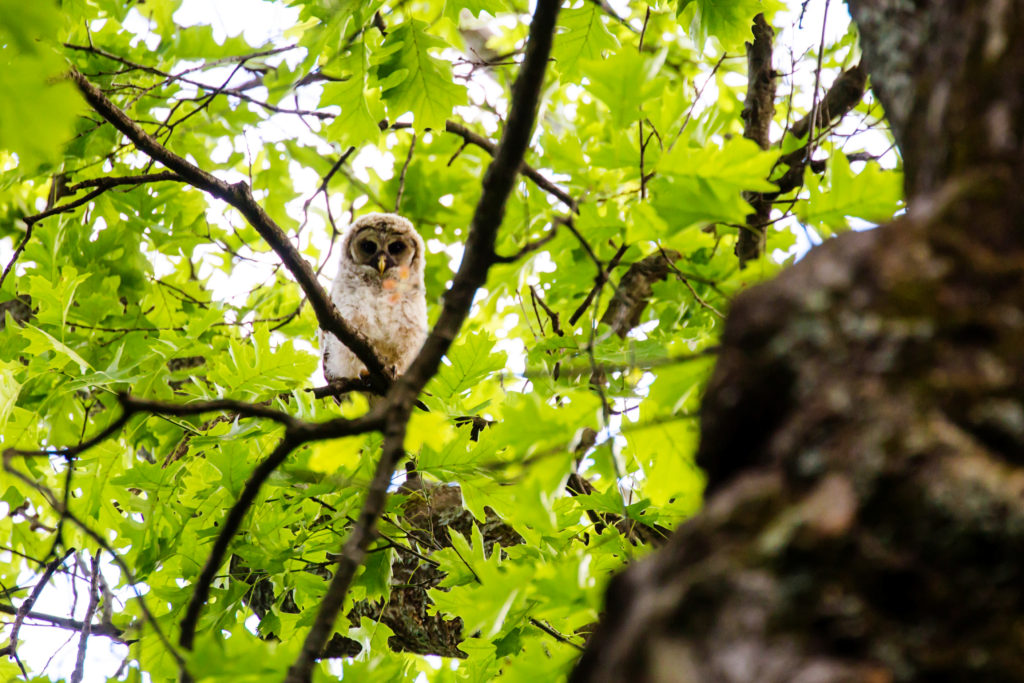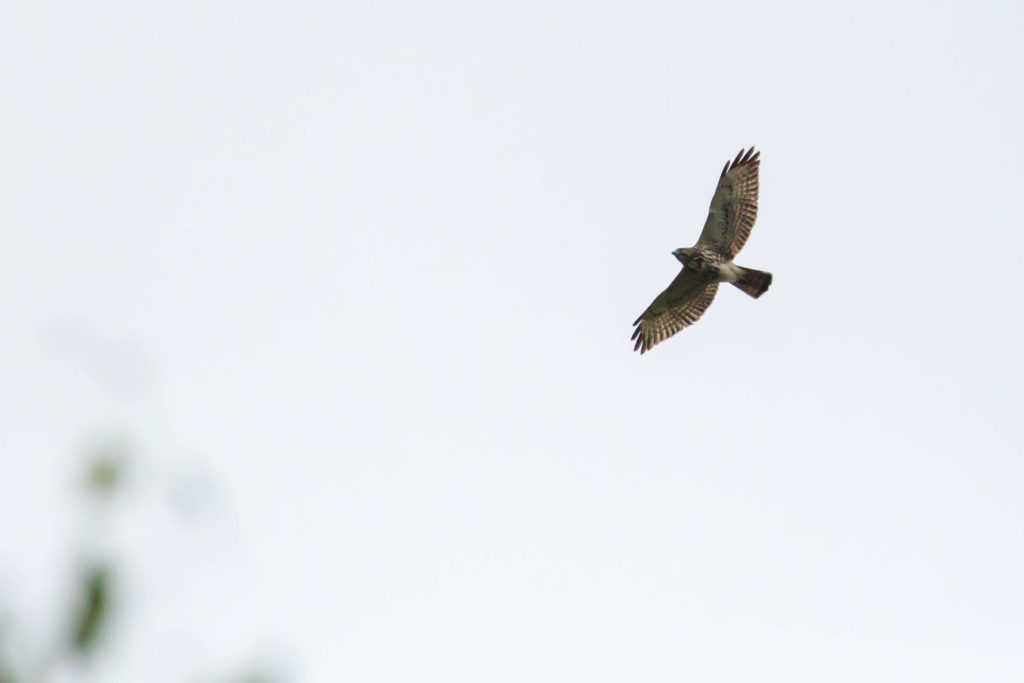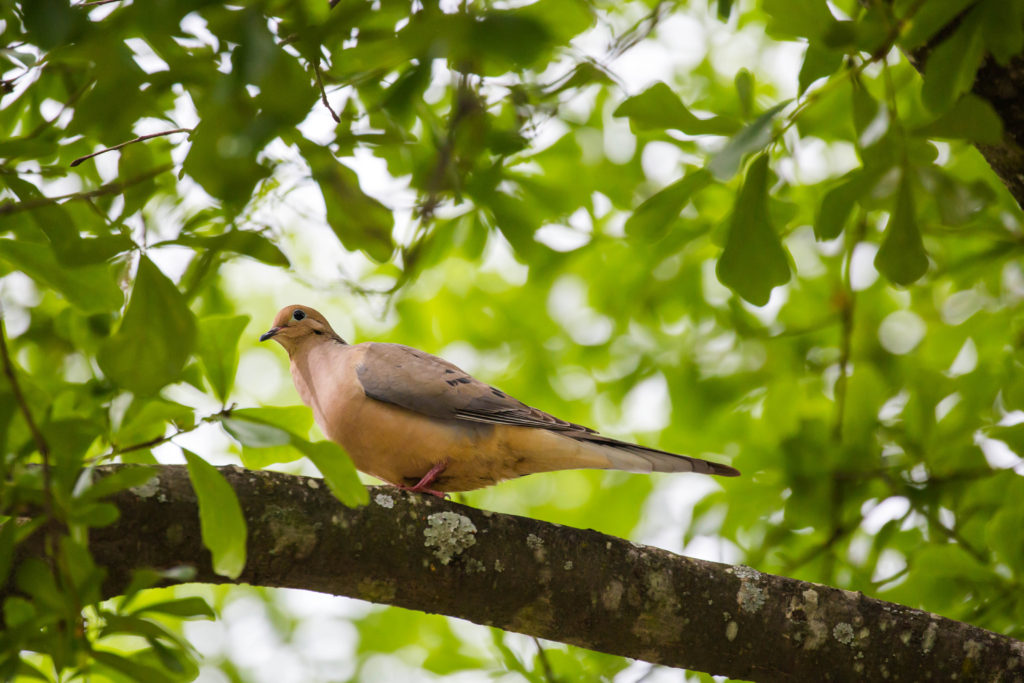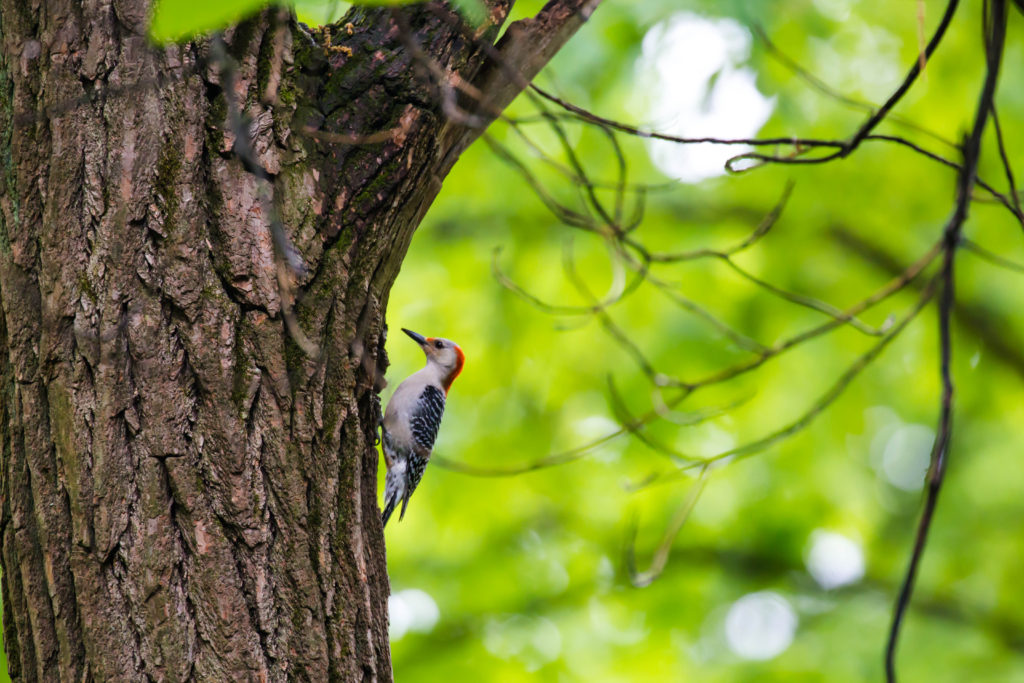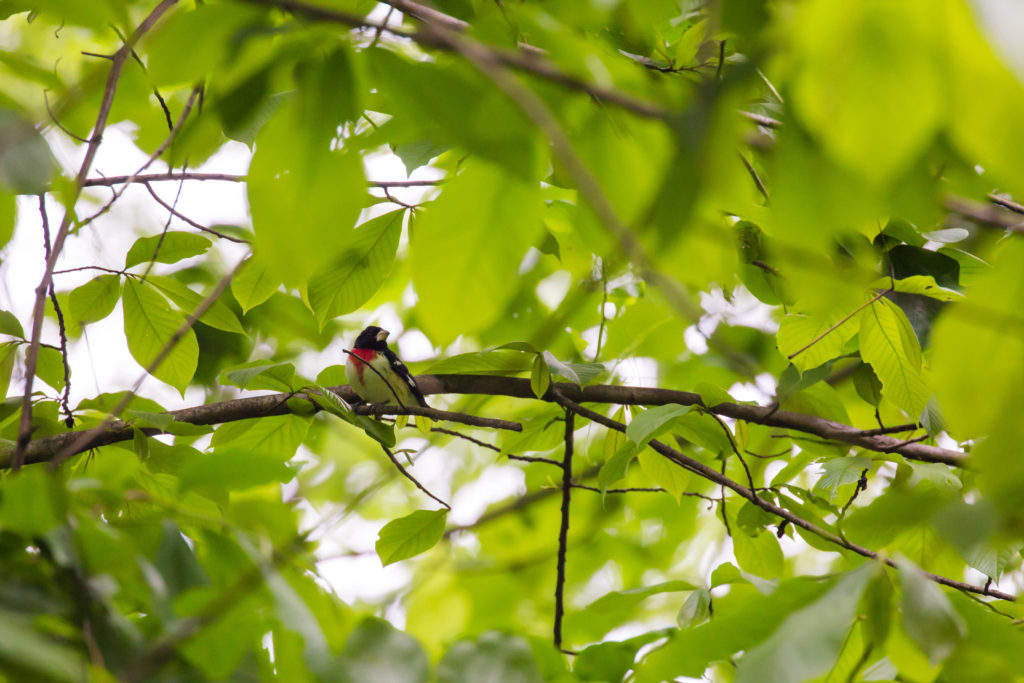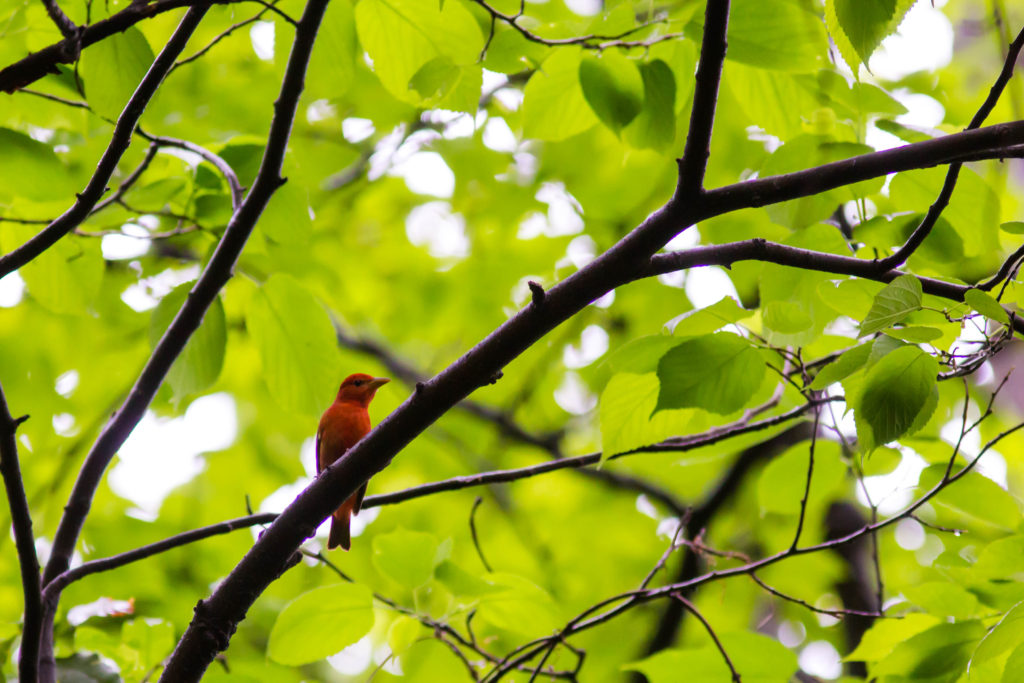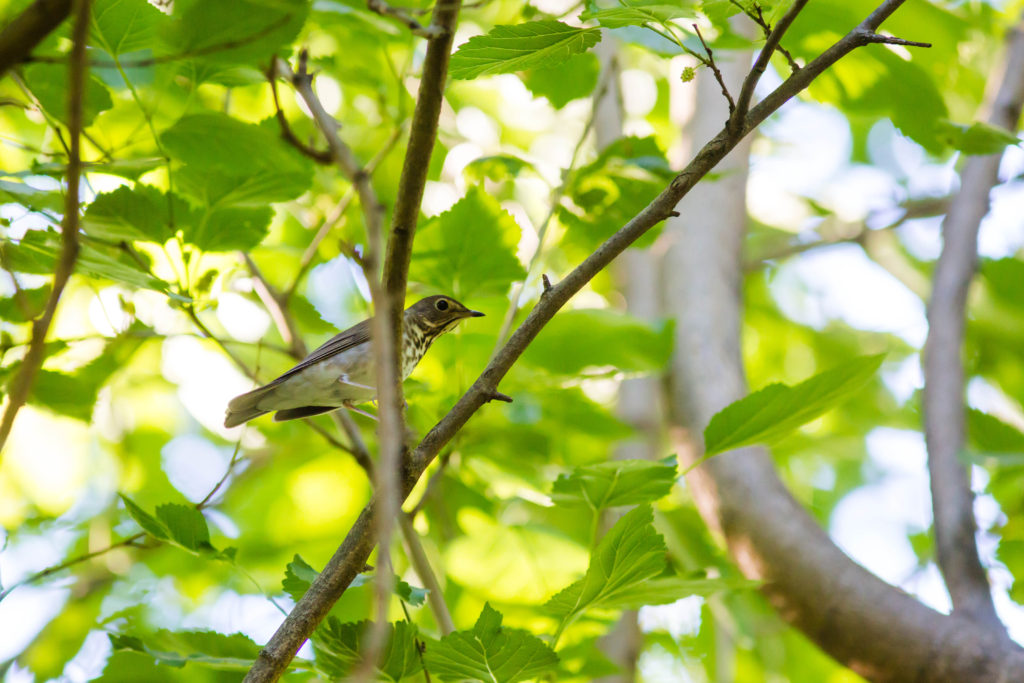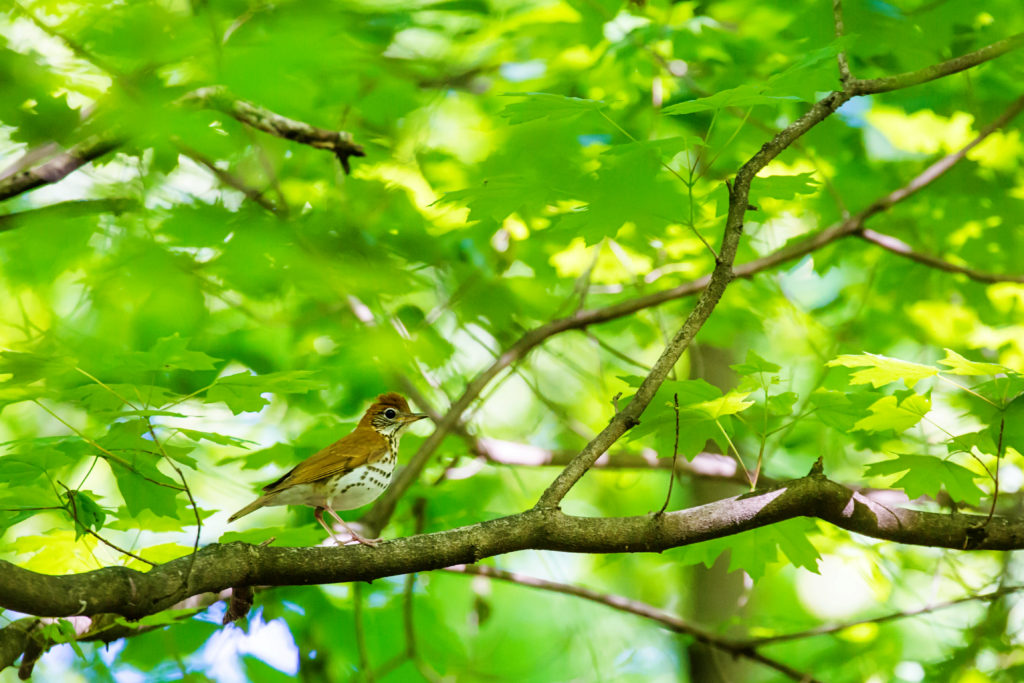Bucks for Birds #4: Eight Birds and a Baby
This has been the most productive week of Bucks for Birds so far, so much so that I’m going to split it into a couple of posts. We’ll save the warblers for next time and just dive right in to the less-flashy migrants and some of the residents that were hiding from me earlier in the month.
First up, I know we covered the barred owl already, but it’s breeding season and that means fledglings! If you’re walking through the woods and hear a loud whooshing that almost sounds like a giant vacuum cleaner, you may be hearing fledgling owls begging for food. Look up in the general direction of the whooshing and you may be rewarded with a little fluff monster like this one. (Owls are just my favorite.)
It’s also worth looking up every once in a while to see if you can spot a raptor. We have four pretty reliable hawks in the Old Forest: red-shouldered, red-tailed, Cooper’s, and broad-winged hawk, which is the one pictured below. Somehow, this is the first time I’ve seen one here, so this was a good get for me. The dark-bordered wings and relatively short tail are good ways to distinguish it from red-shouldered, which I anecdotally think is our most common hawk. Broad-winged hawks don’t live here year-round but come here to breed in the forest interior, which makes them a little hard to spot. Glad this one happened to be circling as I walked through.
This bird sounds to me not necessarily like an actual frog, but like a cartoon frog that says “ribbit!” The great crested flycatcher has an unusual mix of lemon yellow and rich brown tones, with an almost-purplish face in some light. It likes to perch high in trees giving a loud “wheet!” call along with some lower-pitched, repetitive ribbits. Because they perch so high, the easiest place to see them in the park is often in the trees that border the golf course. There, you at least have some open space with fewer tree limbs to block your view into the canopy. After listening to them for several days, I spotted this one near hole #3.
You’re probably quite familiar with the mourning dove and its distinctive cooing sound. These birds often mate for life, and they quite literally mourn each other should one bird meet an untimely end. Their name comes from the sorrowful sound of their call. Their other distinctive noise actually comes from the wings: when they take flight, they make a racket that suggests they’re frightened, but it’s actually just a whistling due to the contours of their wings. Biologists think it may be an adaptation to warn fellow birds that a threat is nearby, and it serves as an extra form of vocalization since they have a limited variety of songs.
The red-bellied woodpecker is a familiar local resident whose cough-like calls are heard year-round. It seems like they should be called red-headed woodpeckers, since the patch of red on their heads is much larger than the one on their bellies. However, there’s another woodpecker whose entire head is red, so it earned the name fair and square. We occasionally see those in the park too, but with much lower frequency–they’re a threatened species in general, but they also prefer forests with pines, and we’re almost all deciduous in Overton Park!
The rose-breasted grosbeak graces the cover of my favorite field guide, the Stokes Guide to Birds of the Eastern Region, so you know it must be an attractive bird! As you might expect, the name “grosbeak” refers to the fact that these birds have very large bills that help them eat tough seeds. Their song is similar to that of the robin, so they can be easy to miss if you’re not looking for them. You learn to tune out the robins pretty quickly in the Old Forest!
The first time I hear a summer tanager every year, I have to search my memory for which bird makes the three-note muttering call that becomes so familiar over the course of the season. Then I look far into the canopy for a flash of red. The male of this species is the only bird in North America that’s all red, although I’m partial to the immature males whose red feathers are awkwardly intermingled with the mustard colors that characterize the females. Learn the “pitituk” call–you’ll hear it more often than you expect.
Around this time of year, there’s a subtle change in thrushes: the hermit thrush of the winter is replaced by the extremely similar Swainson’s thrush of the spring. You’ll know the hermit is out an the Swainson’s is in by a look at the tail, which is rusty red in the former and tan in the latter. This bird was named after English ornithologist and illustrator William Swainson by botanist Thomas Nuttall, who himself has several species named after him. This bird has the usual flute-like tone of the thrushes, but its song is distinctive for spiraling upward in pitch.
My favorite singer of all is the wood thrush, which somehow combines the flute tone with a kind of electronic ringing. I always know immediately when they’re migrating in because I hear them well before I see them. The wood thrush has dark brown spots on its breast, a rotund white belly, and a more cinnamon color than the other thrushes.
I’ll be back soon with the warblers of the week. I’ve only got six days left to hit my 50-species goal!
The list to date (37):
- American robin
- Barred owl
- Blue-gray gnatcatcher
- Blue jay
- Broad-winged hawk
- Brown-headed cowbird
- Carolina chickadee
- Carolina wren
- Cedar waxwing
- Chimney swift
- Chipping sparrow
- Downy woodpecker
- European starling
- Great crested flycatcher
- Hairy woodpecker
- Hermit thrush
- Hooded warbler
- Indigo bunting
- Mourning dove
- Myrtle warbler
- Northern cardinal
- Northern parula
- Orange-crowned warbler
- Palm warbler
- Pileated woodpecker
- Red-bellied woodpecker
- Red-eyed vireo
- Rose-breasted grosbeak
- Ruby-crowned kinglet
- Ruby-throated hummingbird
- Summer tanager
- Swainson’s thrush
- Tufted titmouse
- White-breasted nuthatch
- White-eyed vireo
- White-throated sparrow
- Wood thrush

